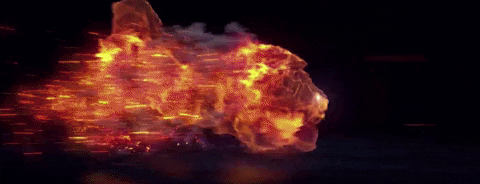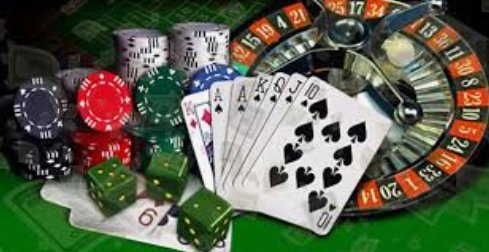Option Trading Review: What is low probability options trading and why would anyone do it?
The first type of options trading new traders learn is buying and selling options. It is easy to understand as you buy low and sell high. It’s a single transaction trade and it’s very popular. The irony of buying options as a strategy, is that technically it’s a LOW probability play. That’s right, in the land of percentiles and probabilities, this low probability play is very popular. That’s what I will discus in this post.
As eluded to above, buying options is profitable when the underlying stock or asset increases in value. This is a straight forward buy low, sell high transaction. Additionally, the options market allows the trader many advantages over the stock market. First there is the multiplier effect of buying contracts, which represent control over one hundred stock shares. Second you invest a much smaller amount of money to buy the options contract, which allow you to control one hundred shares of stock versus buying 100 shares of the same stock. For example 100 shares of Apple is $10,000.00 versus one call option contract for $300.00. Third a small change in the price of the stock causes a much greater change in the price of the option. For example a five dollar change in Apple’s stock price is a 4% change of $5 in a $100 dollar stock, but that same price change $5.00 of a $10.00 Option is a 50% change. This type of leverage and high rate of return on small, short term changes in the stock price is both intoxicating and addictive. Some traders study cyclical stocks, to buy on the dips and sell on the recovery phase or others buy options ahead of stock splints or favorable earnings announcements. These strategies are meant to make up for the statistical disadvantages inherent to buying stock options, and using them as an investment vehicle.
What are those statistical disadvantages?
They are the opposite of the statistical advantages of selling options. So for example, in terms of probabilities if you pick as a strike price the current market value of the stock there’s a 50% chance it will close at that price when the option expires. This is the statistically calculated probability, backed by a Nobel Prize for Math and Economics. Now as you move away from the market price you are following a bell shaped curve of probabilities. The higher the price or the lower the price, the less likely it becomes that the stock will be at that price on Option expiration date. Each stock has a slightly different bell shaped curve, in that the one standard deviation move could be one dollar for stock A, but that same one standard deviation move could be ten dollars for stock B. So you should review the price probability curve for each stock before trading. The option buyer wants to buy low and sell high. The majority of Option buys occur far from the market price. This is where the probability of success maybe 20% or less, that’s 1 chance in five, but in the options market the rate of return mirrors the odds of success, so that 1 in 5 shot of success pays 5 to 1 on your investment, in general.
For example, if Apple’s market price is $100.00, and the strike price of $110.00 is at the 80th percentile, your cost or the initial purchase price called the premium out at the 80th percentile on the bell shaped probability curve may be $1.00 (expiration date in 30 days). However at the 80th percentile on the curve, the probability of the stock price reaching the corresponding strike price is the inverse of the probability of 80% or only 20%. Those are not good odds, but your reward for taking that bet with 1:5 odds is a 5:1 return, you option price would rise to around $6.00 if the stock rose ten dollars in 30 days. So options math says this is a low probability options trade and it is ill advised. It is often said, that if an Options trader can suppress the two emotions fear and greed they can get rich. But the low cost and potential high reward is attractive, so traders buy similar options all the time. It is from this statistical disadvantage that options trading gets its reputation for being a gamble and sometimes is referred to as purely gambling.
I believe that those who invest in anything; real estate, gold, stocks or cryptocurrency understand that all investing is a gamble or politely referred to as calculated risks. Meaning we thought about the pros and the cons and then invested. The two emotions fear and greed can lead to your ruin, despite the vehicle.
✍️ written by Shortsegments.

Useful Terminology
Some background terms for those of you reading one of my posts for the first time.
“Premium”
In exchange for the rights conferred by the option, the option buyer has to pay the option seller a premium for carrying the risk that comes with the obligation. The option premium depends on the strike price, volatility of the underlying, as well as the time remaining to expiration.
“Expiration Date”
Option contracts are wasting assets and all options expire after a period of time. Once the stock option expires, the right to exercise no longer exists and the stock option becomes worthless. The expiration date and month is specified for each option contract.
Call Option
A call option is an option contract in which the holder (buyer) has the right (but not the obligation) to buy a specified quantity of a security at a specified price (strike price) within a fixed period of time (until its expiration).
For the writer (seller) of a call option, it represents an obligation to sell the underlying security at the strike price if the option is exercised. The call option writer is paid a premium for taking on the risk associated with the obligation.
For stock options, each contract covers 100 shares.
Put Option
A put option is an option contract in which the holder (buyer) has the right (but not the obligation) to sell a specified quantity of a security at a specified price (strike price) within a fixed period of time (until its expiration).
For the writer (seller) of a put option, it represents an obligation to buy the underlying security at the strike price if the option is exercised. The put option writer is paid a premium for taking on the risk associated with the obligation.
For stock options, each contract covers 100 shares.
Out-of-the-Money (OTM)
Calls are out-of-the-money when their strike price is above the market price of the underlying asset.
Puts are out-of-the-money when their strike price is below the market price of the underlying asset.
Out-of-the-money options have zero intrinsic value. Their entire premium is composed of only time value. Out-of-the-money options are cheaper than in-the-money options as they possess greater likelihood of expiring worthless.
Theta
Theta is a measure of the rate of decline in the value of an option due to the passage of time.

To listen to the audio version of this article click on the play image.

Brought to you by @tts. If you find it useful please consider upvoting this reply.
Thank you for the good explanation
Posted using Partiko iOS
!glyphy good + job
Thank you for the good explanation
Posted using Partiko iOS
Your GIF at the end is great!
Posted using Partiko iOS